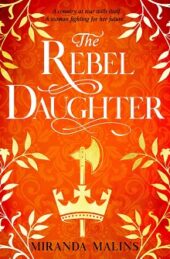The Stuart era is currently undergoing something of a rebirth in historical fiction, with authors turning their keystrokes to the long-reviled and much-decried Stuarts. Andrew Taylor has been amongst the vanguard in reassessing and promoting this era as the passionate, fascinating, and lively period that it was.
The latest in his rollicking, fast-paced series of mysteries set in Restoration England provides a welcome chapter in the ongoing saga of James Marwood and Cat Lovett-Hakesby. As always, the feel for the period is spot on. In addition to the references to Restoration comedies, the culture and spirit of the age – which straddles the Renaissance and the Enlightenment – comes through in the customs and dialogue without ever feeling obvious or clunky. This was an age of stifling decorum and baroque manners, of poverty and injustice, of elegance and brutality, and Taylor does a marvellous job in bringing its contradictions to life. Set against a backdrop of shuttered drawing rooms, sinister servants’ halls, packed theatres and noisy taverns, the action provides a sweep of life at all levels without ever losing the intimacy and intrigue of its characters’ (whether scheming or investigative) private lives.
In addition to Cat and Marwood, the novel provides a large cast which is well served by multiple narrative perspectives. The shifts might seem a little overwhelming to new readers, though the clear breaks provided between different characters’ narratives and Taylor’s masterful use of different voices keep the tale engrossing, and, thematically, this style works in telling a story on this scale and level of intrigue. The opening dramatis personae will also be welcome to new readers in keeping up with a period less familiar than the Tudors. Existing fans of the series, I don’t doubt, will have no trouble at all. At root, of course, Marwood and Cat provide engaging protagonists, and their curious – and never cliched or predictable – relationship forms the novel’s emotional backbone.
The great hook of the story lies in witchcraft and the occult, which are always welcome. However, thereafter multiple plots intersect as high political intrigue collides with domestic drama, murder, and even – and this is marvellous and, as the author’s note attests, accurate to the period, a lion. The handling of real life politics (which are far less familiar, comparatively, to events of earlier and later eras) are well handled and will be welcome to fans of rich historical drama. I am no expert in Restoration politics, and yet I found myself diving into the era with abandon, and doffing my hat at how well actual historical figures were portrayed. Taylor’s skill in weaving together real-life personalities and his fictional creations is, as usual, seamless.
Ultimately, I suspect that those who are new to Cat and Marwood might like to start at the beginning and work up to The Royal Secret. Such a journey is, however, most certainly worth embarking upon.
Steven Veerapen is a historian, novelist and academic of the Tudor period, and author of Of Blood Descended.






